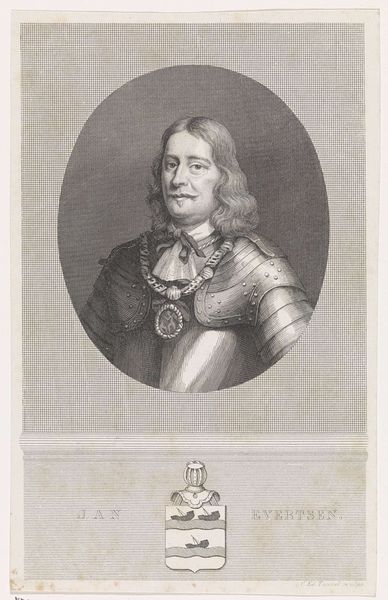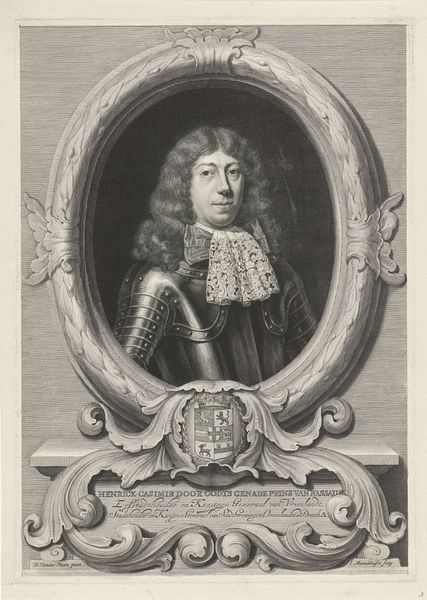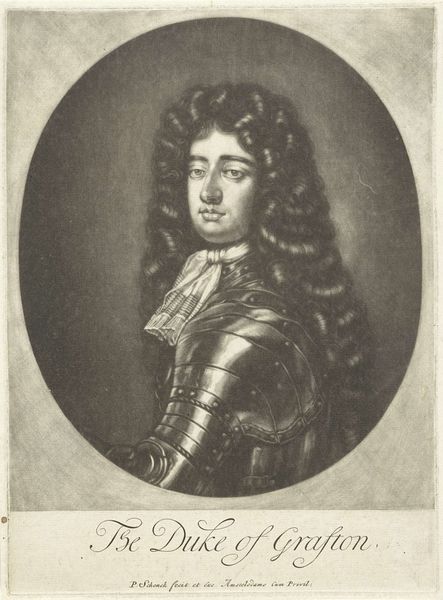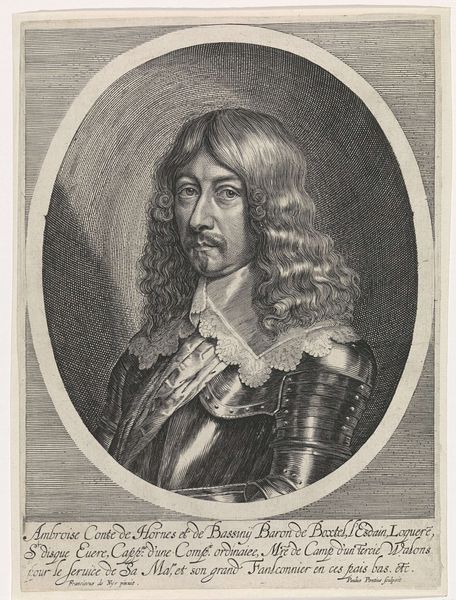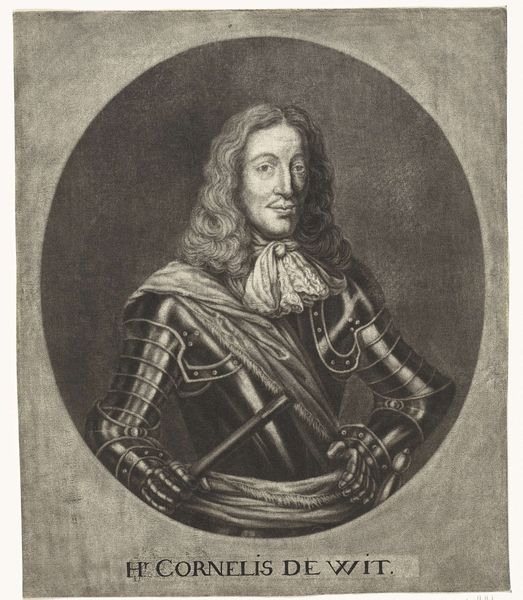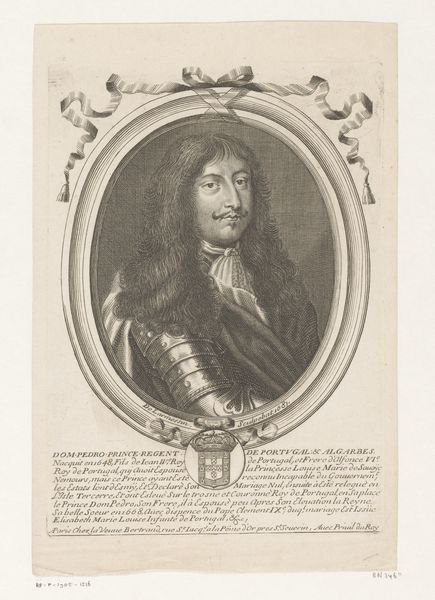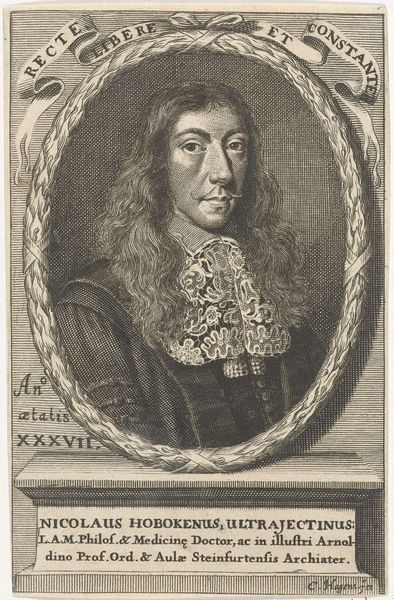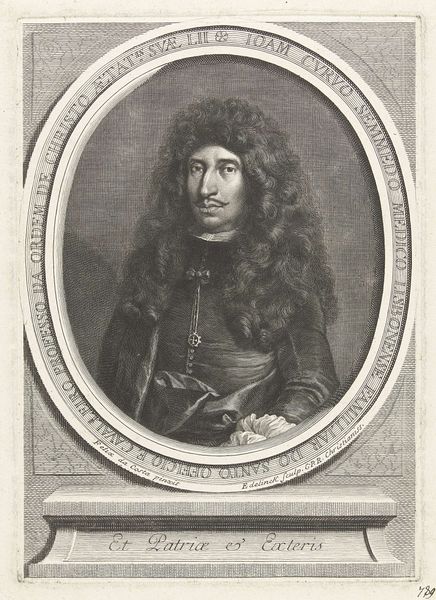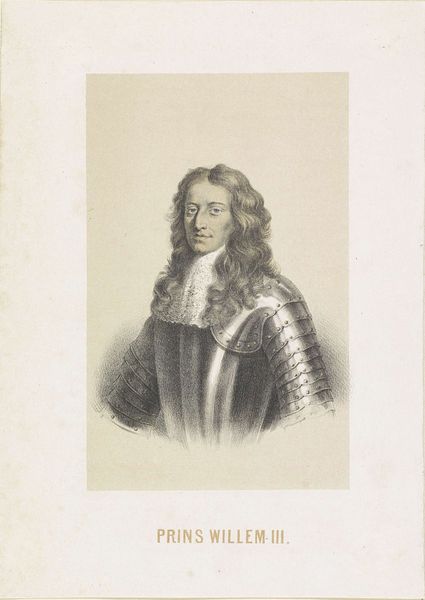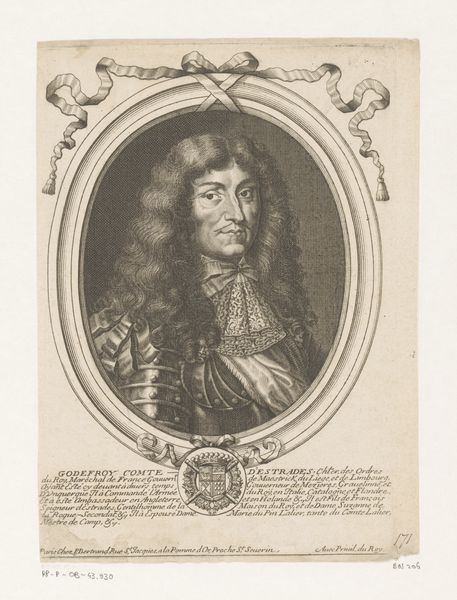
engraving
#
portrait
#
baroque
#
dutch-golden-age
#
old engraving style
#
figuration
#
line
#
history-painting
#
engraving
Dimensions: height 365 mm, width 245 mm
Copyright: Rijks Museum: Open Domain
Curator: Looking at this engraving, I immediately get a sense of the weight of history and authority. It's imposing, despite being relatively small. Editor: Indeed. What we have here is Hendrik Bary’s portrait of Willem Joseph, Baron van Ghent, dating from around 1657 to 1707. Bary captured van Ghent in the Dutch Golden Age style. Considering that Willem Joseph was a lieutenant admiral and colonel of the marine regiment in Amsterdam, that impression you get makes perfect sense. Curator: That Baroque framing with the laurel wreath adds to the sense of formality. But beyond that, I'm curious about how social position and masculine identity are performed through images like these. That lace collar alone speaks volumes about status, wealth, and power structures of the time. Editor: Absolutely. We need to remember the socio-political environment. Van Ghent's naval accomplishments were significant. Think about the role art played back then. Commissioned portraits reinforced not only individual prestige, but also the dominance of the ruling classes. How institutions like the Admiralty also shaped artistic output through patronage, isn't easily appreciated today. Curator: How do you think this work engaged with ideas of Dutch national identity during this time of major naval expansion? Were images such as these merely promotional tools or something deeper? It strikes me as particularly relevant given ongoing discussions about nationalism, both within the art world and globally. Editor: Good question! Its political value as an image designed to legitimize power and reinforce Dutch naval strength should not be underestimated. But the artistry elevates it beyond simple propaganda. Bary’s skill transforms it into a lasting historical document and insight into the mindsets of Dutch imperial ambition at the time. Curator: Right, and that tension between art and propaganda keeps this image interesting beyond its immediate historical value. Editor: I agree. The Baron van Ghent's representation within this portrait is clearly steeped in complex historical contexts. Curator: Ultimately, viewing it forces us to interrogate our relationship to the legacy of figures and the politics surrounding art and their place in societal historical constructions.
Comments
No comments
Be the first to comment and join the conversation on the ultimate creative platform.
